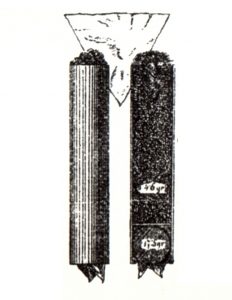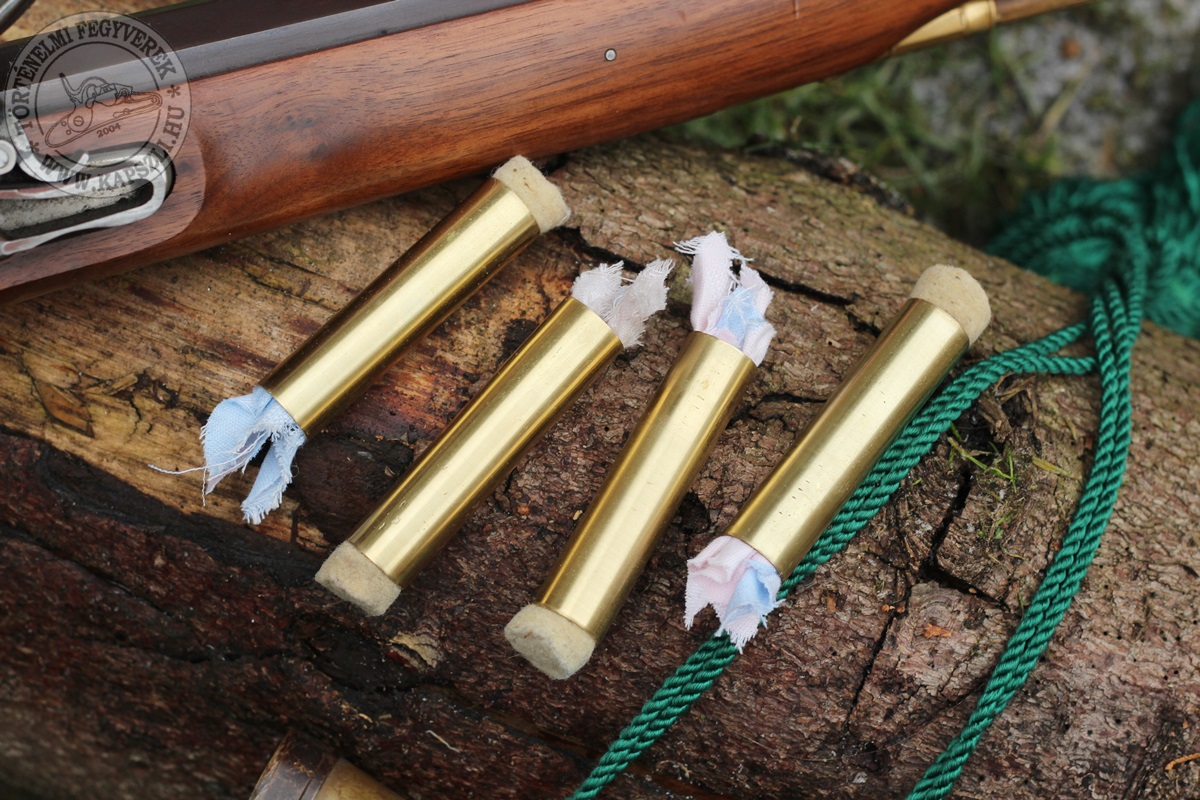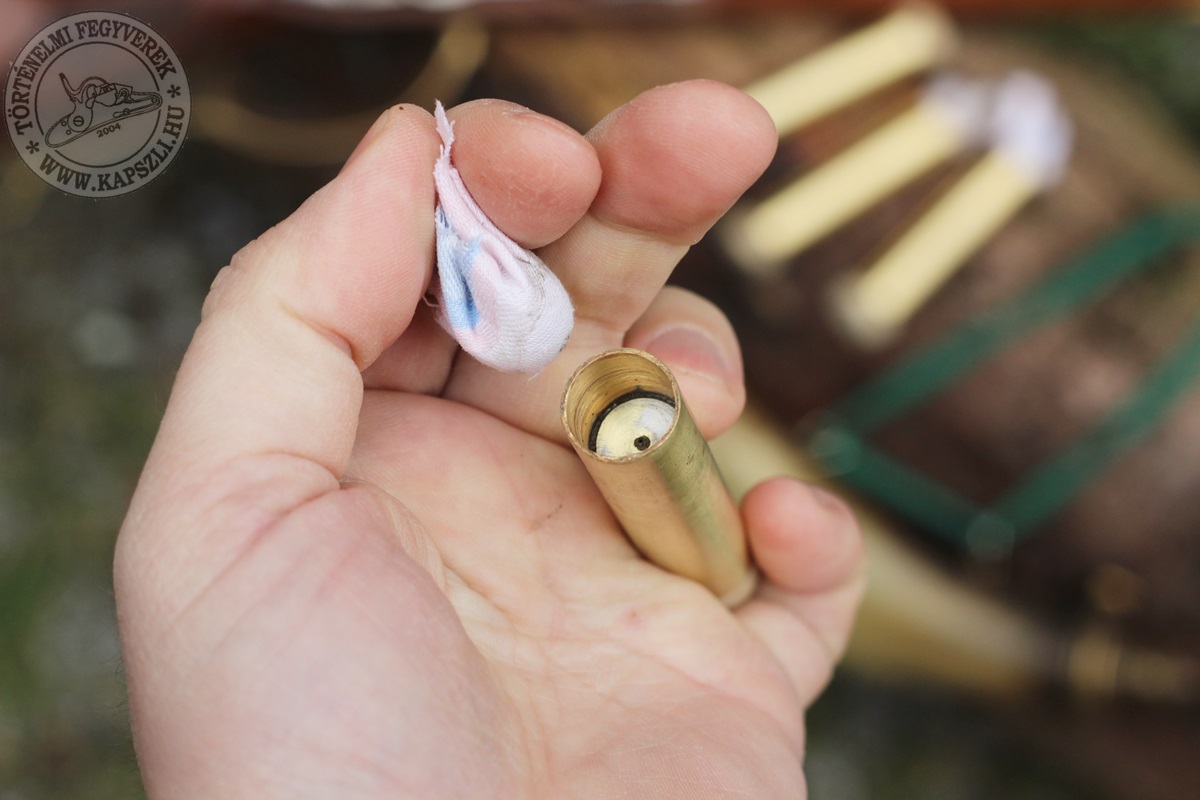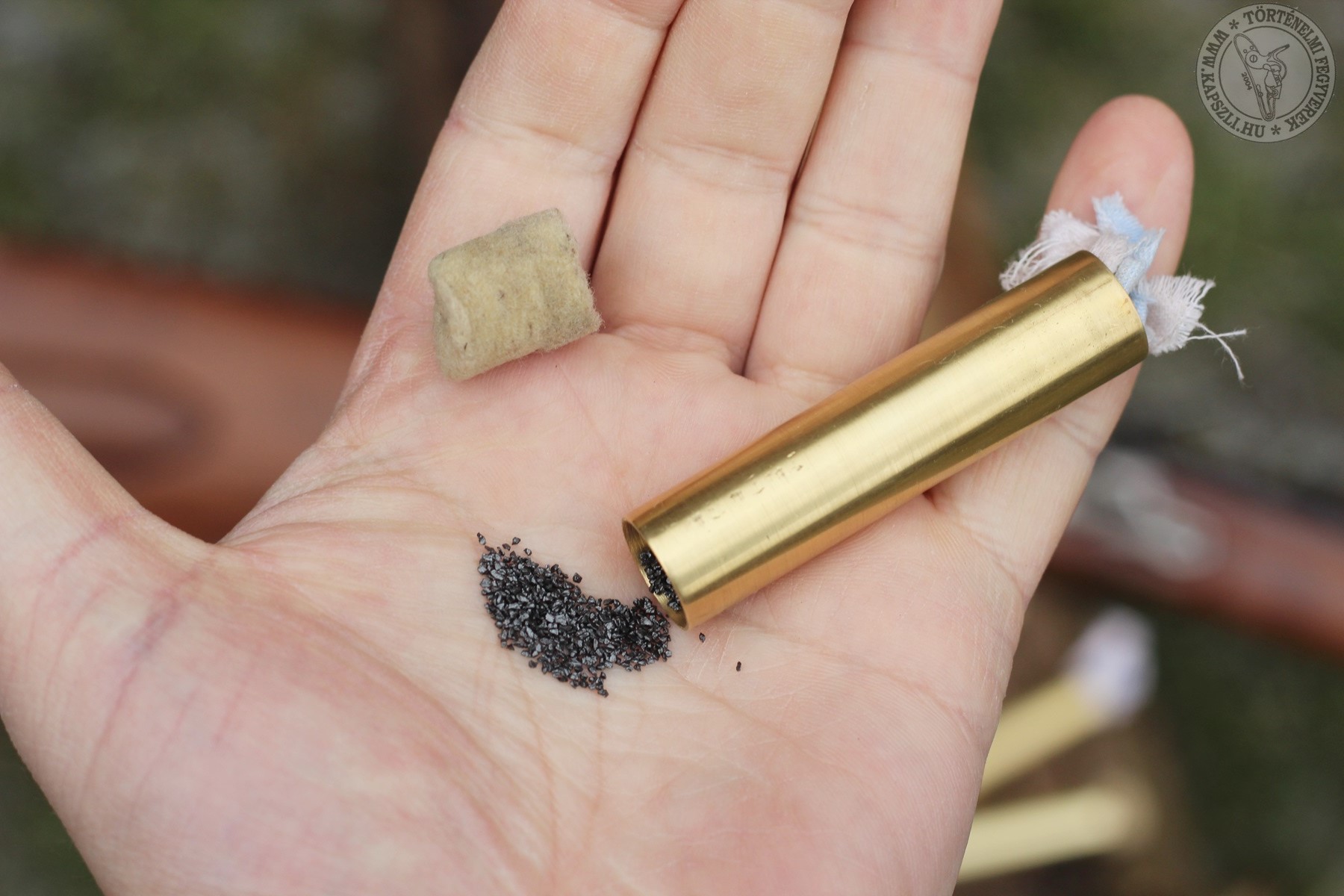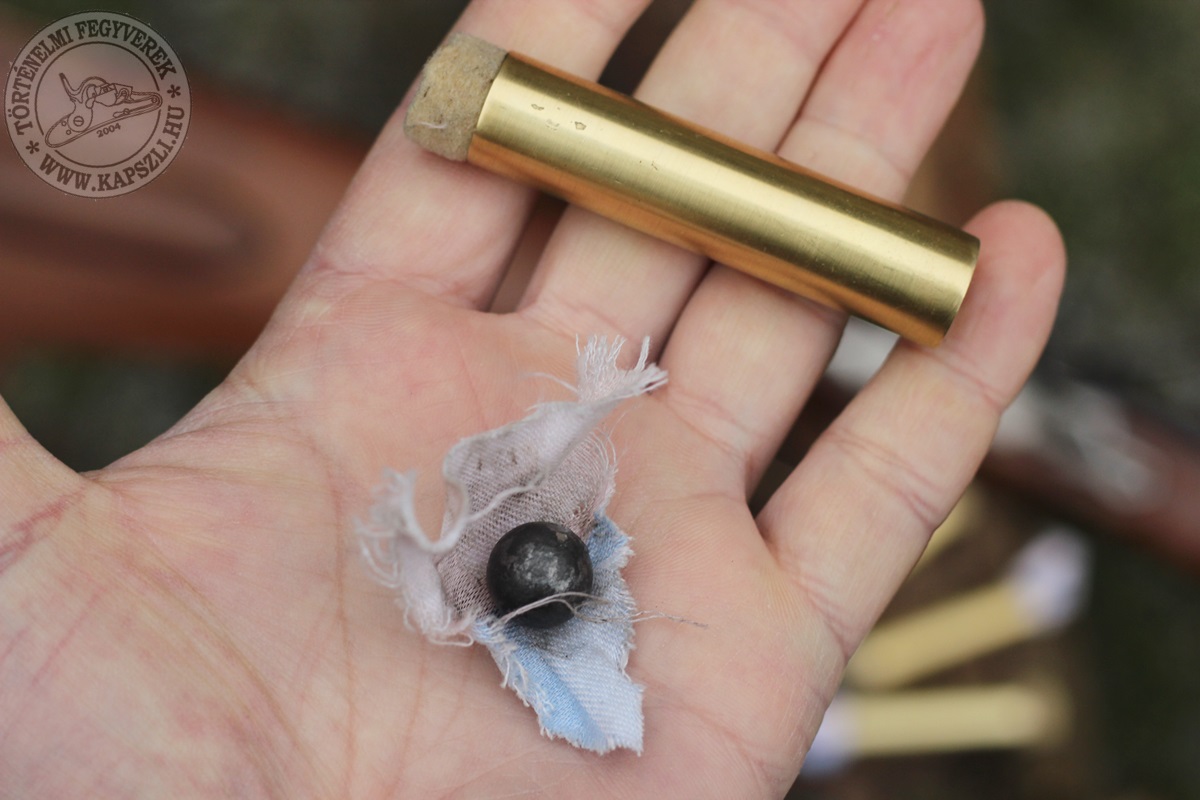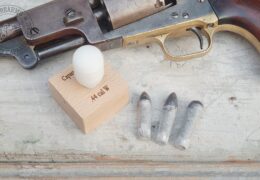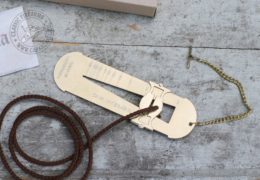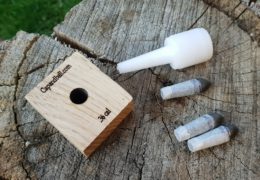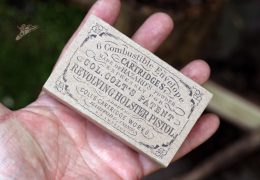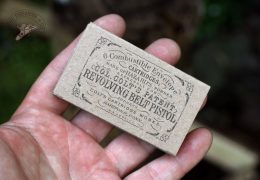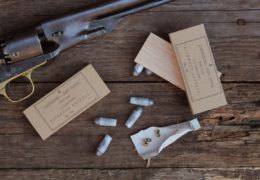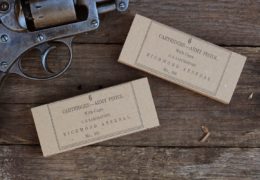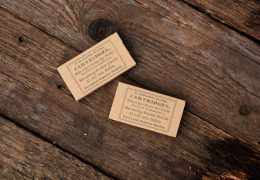Speedloaders of the Napoleonic times
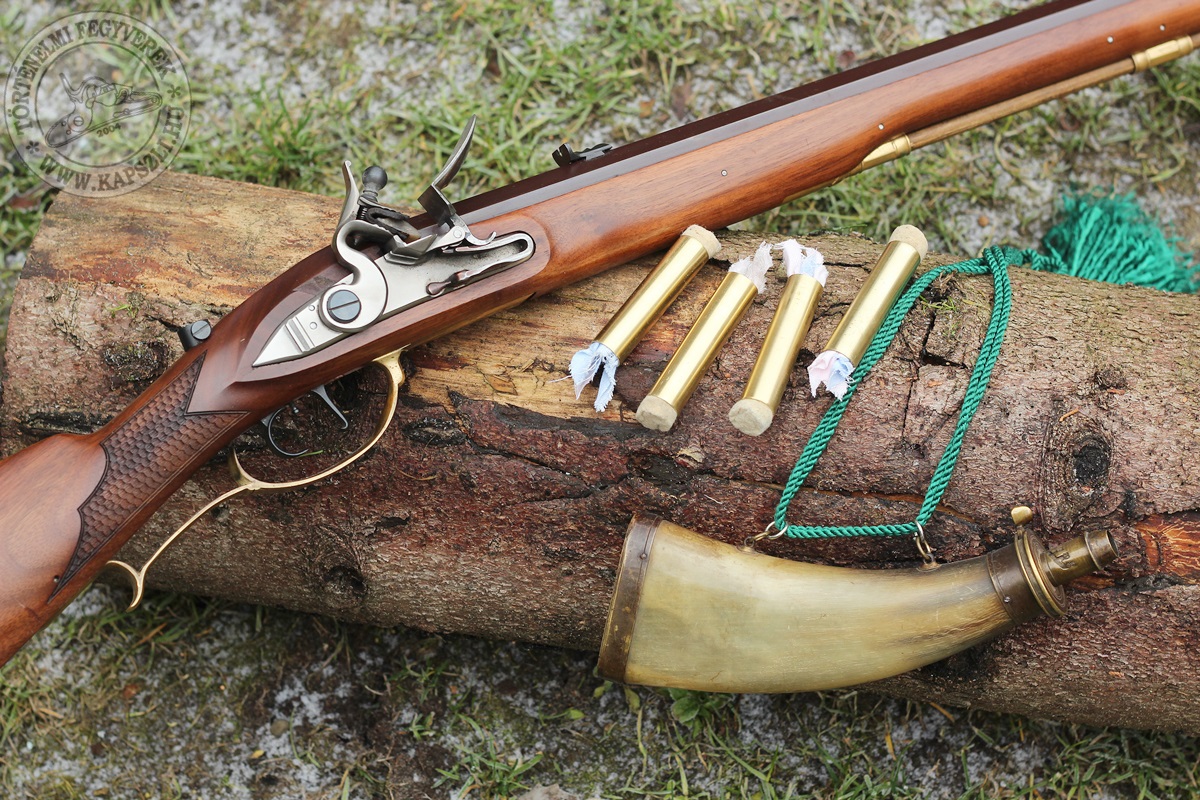
So you think that speedloader is an invention of the 20th century? Well I guess you are wrong. Loading tubes were used long before the renaissance of blackpowder shooting and hunting. We know of many examples from Europe. These little tubes, that could hold the charge and the bullet were mainly used by hunters, but let me show you now an example that was issued to the specialist troops of the Hapsburg Army.
The Jäger regiment and the Feld-Jäger battalions were special troops of the K.K. army. They were excellent examples of light infantry, fighting with different tactics than the regular soldiers. The Jägers were usually crack shots, recruited from the hunters of the regions of the Monarchy. They used shorter guns than the regular infantry. They could be best utilized in broad skirmish lines. A skirmish line, placed 1-200 steps in front of the closed formation of the line infantry battalion or regiment was an excellent force to battle the enemy skirmishers and to prepare the situation for the attack of the line troops. The skirmish line was a loose chain of 3 men teams. Two of them were equipped with short rifles or Jäger-Stützens, one of them armed with a smooth bore Jäger-Karabiner. Therefore there were Karabiner-Jägers and Stützen-Jägers with different armament and different roles.
The Stützen-Jäger was responsible for accuracy while the Karabiner-Jäger was responsible the good rate of fire. The rifle was loaded with a patched roundball that was much slower to load then the smooth bore carbine using standard paper cartridges and heavily undersized round balls. The smooth bore Jäger-Carbine was loaded with the same procedure like
the standard infantry muskets but loading the rifled Jäger-Stützen was a much slower activity. When the Jägers were fighting in a skirmish line, the rifle armed men were in front, while the smooth bore Jäger was the reserve, only firing his gun when it was absolutely necessary. When they were forced to fight in close formation, forming a line, the Carabiner-Jägers were in the front line, while the Stützen-Jägers in the second.
The Stützen-Jäger in the times of the Napoleonic wars could load his rifle several ways. These rifles had a calibre of 14,5 mm, while their ball was 14,2 mm in diameter. They were loaded with a triangular patch saturated with the mix of beeswax and tallow as lubricant. The ball and the patches were placed in the cartridge box. The Jäger carried the powder in a horn that was closed with a springed door or with a plug. He could also carry the pre measured powder rolled into paper cartridges without having the ball and patch in the paper tube. He had a small brass measure hanging on the strap of the cartridge box that could be used for measuring the powder directly into the bore or for preparing the right charges for the paper cartridges. This measure was adjusted to give 4,6 g of fine Schützenpulver, the best quality military powder of the Hapsburg Army.
In the first half of the Napoleonic war they also had some interesting items in their inventory: 12 brass tubes with a smaller and a bigger compartment separated. The smaller compartment held the patched roundball firmly, while the bigger held the powder charge. This side was closed with a felt wad that was pushed on the powder to separate the patched ball from the powder in the bore.
When the Jäger loaded the rifle, he took one speedloader tube from the cartridge box. Opened the end of the powder compartment, poured the powder into the bore, rammed the felt wad on it. His loading rod had an unusual place. Maybe you already noticed that many of the Germanic short military rifles do not have a ramrod channel under the bore. In fact the Jägers carried their ramrod in a small ring located on the strap of the cartridge box.
The official place for the patches was the cartridge box, but if the Jäger was loading his rifle with paper cartridges or loose powder from the horn, they often placed these large triangular patches on their hats for easy access.
Loading the Jäger-Stützen in the pre-Napoleonic times started with placing the hammer into halfcock and putting a leather cover on the opened frizzen.
When they used a loading tube and they were done with loading the powder and the wad, they removed the patched ball from the other compartment of the tube. And this gives an answer why they needed a rectangular patch: it is much easier to grab the patch if it is not round.
The head of the ramrod was used to start the tight fitting patched ball in the bore. During the Napoleonic times they were issued a hammer tied to the cartridge box strap to do this. When the ball was pushed down firmly on the powder he primed the lock from the powder horn. This is also an unusual sequence as soldiers using paper cartridges for a flintlock musket always started with priming the pan after they opened the end of the cartridge.
These brass tubes were easy to lose so in the beginning of the 19th century first their number was limited to 12 than they completely disappeared leaving the Jägers with the powder horn, the brass powder measure and paper cartridges.
My speedloaders visible in the picture are nearly exact copies of the original. The only difference I made was reducing the size as my Pedersoli Jäger rifle shoots 0,535” or 13,59 mm balls. A bit smaller ones than the original rifles did. The internal diameter of my tube is 14 mm and the total length is 65 mm. The separator is placed 15 mm from one end. It is a 1 mm thick brass disc soldered into the tube. They make a fine and periodically correct companion for my Jäger rifle, and I am sure they will be useful on historical shooting events or when I am hunting with my flintlock rifle.
Today the speed loaders are useful items for a hunter. But next time you get one in your hands stop for a minute and think about the soldiers of old times who were probably the first to use this little tools for loading their guns on the battlefield.
And here is the pre-Napoleonic time process for loading the rifle according to Leopold Freiherr Unterberger, Feldzeugmeister (lieutenant general) of the K.K. Army. I think you will understand why rifles could not be used as a general firearm for all the soldiers of the infantry. A good smooth bore musket armed soldier fired 3 rounds per minute. If the musket had a conical touch hole there was no need to prime the pan as the powder of the main charge could enter the closed pan through the flash hole. In this case the rate of fire could be increased to 4-6 per minute like the Prussian soldiers did. A great advantage versus the slow rate of fire of the patch roundball rifles.
Macht euch fertig! – Prepare.
Ergreift die Patron! – Grab the cartridge.
Zieht den Propfen aus den Patron! – Pull the wad from he cartridge.
Wischt damit die Batterie, Pfanne und Stein! – Clean the frizzen, the pan and the flint with the wad.
Gebt das Batterie-Futteral auf! – Install the frizzen cover.
Schwenkt zur Ladung! – Turn for loading.
Schüttet das Pulver ein! – Pour in the powder.
Stosset ein paarmal auf! – Hit it down a few times.
Setz den Propfen darauf! – Place the wad into the bore.
Kehrt die Patron um! – Turn the cartridge.
Ziehet am Zipfel des drieckigen Pflaster! – Pull the angle of the triangular patch.
Nehmt die Kugel in die Hand! – Put the ball in your hand.
Steckt sie in den Lauf! – Put it into the bore.
Steck die Patronenhülse wieder ein und ziehet den Ladstock aus dem Ring! – Return the loading case and pull the ramrod from the ring.
Schlagt mit dem Kopf des Ladstockes die Kugel ganz hinein und stoßt sie mit dem Setzer nach! – Hit the bullet into the bore with the head of the ramrod and psuh it down with the rod.
Macht euch fertig! – Prepare.
Nehmt des Batterie-Futteral ab und greift nach dem Pulverhorn! – Remove the frizzen cover and grab the powder horn.
Schüttet das Pulver auf die Pfanne! – Prime the pan.
Blast ab! – Blow off (the overflown powder).
Schließt die Pfanne und spannt vollends den Hahn! – Close the frizzen and put the hammer in full cock.
Schlagt ruhig an! – Aim steadily.
Balázs Németh





